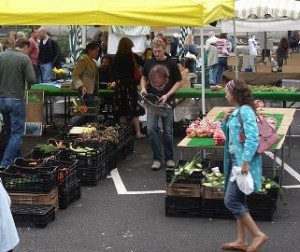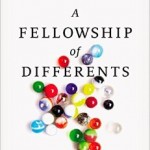 A major facet of the Ecology section of our Slow Church book, is coming to the realization that creation is an inter-connected and interdependent whole. Several years ago, my friends Ragan Sutterfield, Brent Aldrich and I brainstormed a long list of ideas for celebrating July 4th as INTERdependence Day. This list was eventually published on the Sojourners blog with an intro by Shane Claiborne.
A major facet of the Ecology section of our Slow Church book, is coming to the realization that creation is an inter-connected and interdependent whole. Several years ago, my friends Ragan Sutterfield, Brent Aldrich and I brainstormed a long list of ideas for celebrating July 4th as INTERdependence Day. This list was eventually published on the Sojourners blog with an intro by Shane Claiborne.
As we come again to the 4th of July, I think it would serve us well to take another look at this list. And to imagine what a slow church might look like that bore witness to the interdependence of God’s creation.
Independence is overrated and more than that it is a myth. We are all utterly interdependent beings from birth to death. We could not survive without microbes that help build our soil and the plants and trees that create oxygen and offer us food; we would never become mature adults without teachers and mentors; our cities would be full of disease if we didn’t have people who collect our garbage. More than Independence Day we need an Interdependence Day to celebrate our dependence upon one another and the earth, and our ultimate dependence upon God. We invite you to participate in a counter holiday on July 4th, a day on which we are declaring our interdependence. Below you will find 40 recommendations for ways to celebrate Interdependence Day. Most of all express thanks to those who make your life possible.
Happy Interdependence Day!
40 Ways to Celebrate Our Interdependence
- Shop only at locally-owned merchants or restaurants.
- Write a note of appreciation to a mother; thank her for raising a child.
- Look through your clothes. Learn about one of the countries where they were manufactured and commit to doing one thing to improve the lives of the people who live and work there.
- Take a digital recorder out into your neighborhood and do “field recordings” of your neighbors showing off their talents (singing, playing instruments, telling jokes/stories). Make a cd of these recordings and distribute it freely in your neighborhood.
- Gather some neighbors, walk around your neighborhood and do asset-mapping, noting key places in the local economy: local businesses, restaurants, parks, community gardens. Make a map that highlights these assets and distribute it freely in your neighborhood.
- Learn where your utilities come from—the source of your electricity, gas, and water.
- Dig up a bucket of soil from your garden or yard, examine it, noticing all of the elements of organic matter, sand, clay, and the organisms that make your daily meals a possibility.
- Host or plan a neighborhood produce exchange, where gardeners can barter the fruits (and vegetables) of their labors with one another.
- Spend the 4th of July baking cookies or bread. Give your baked goods to the person who delivers your mail or picks up your trash the next time you see them.
- Host a rain-barrel making party and teach your neighbors how to make and use rain-barrels to recycle rain water.
- Gather your neighbors and find a building or retaining wall on which to design and paint a mural in your neighborhood. If a suitable wall can’t be found, paint the mural on plywood panels in a park or community garden.
- Spend the day hiking in the woods. Think about how God cares for the sparrows and lilies of the field.
- Gather your neighbors and do a spontaneous parade that shows off people’s talents – music, acrobatics, costumes, etc.
- Host a neighborhood yard sale, except require that participants barter things/services for things they want. Donate any unwanted items at the end of the day to a locally-owned thrift store.
- Climb a tree and sit there for a long period of time, observing and documenting – in photographs, drawings, paintings, writings, etc. – the forms of life that you see from that vantage point.
- Sit down and handwrite a letter to an old friend or family member. Tell them one of your favorite memories of them.
- Commit to not using any gasoline on the fourth of July and encourage your neighbors to do likewise.
- Organize a bicycle tour through your neighborhood.
- Gather your neighbors and make and post educational signs relevant to your neighborhood: See http://learningtoloveyoumore.com/reports/62/62.php
- Gather your neighbors and plant marginal spaces in your neighborhood with native flowers or foods.
- Hold a knowledge exchange where people gather and each get ten minutes to teach the group about something they’re passionate about.
- Call a meeting in your neighborhood to plan a large-scale fall tree planting throughout your neighborhood.
- Pass out copies of a book on local culture or local economy in your neighborhood (e.g., Bill McKibben’s DEEP ECONOMY) and gather on the 4th of July to discuss the book in regard to your neighborhood.
- Announce a contest for making creative bird-feeders (with bonus points for making them out of recycled materials!) and bring all the entries together on the 4th of July, let neighbors judge them and then hang them throughout the neighborhood. Find a way to support the upkeep of the feeders.
- Throw a neighborhood history party. Record neighbors telling their most memorable stories about the neighborhood and assemble these stories into a DVD, CD or book. Make sure elderly neighbors get involved.
- Plan a neighborhood cleanup day – picking up and recycling litter, sweeping sidewalks, etc.
- Find neighbors knowledgeable about local plants and trees and their uses and get them to lead a walking tour that showcases this knowledge.
- Plan a workday in your community garden, or if you don’t have a community garden gather neighbors to brainstorm how you might start one.
- Gather neighbors for a conversation about permaculture. Learn how certain plants when planted together benefit one another.
- Host a neighborhood potluck, and encourage neighbors to use local foods in the dishes they contribute.
- Look for everything you have two of and give one away.
- Host a neighborhood conversation about the practicalities and details of using alternative forms of energy (solar, wind, etc.).
- If there are abandoned/foreclosed homes in your neighborhood, gather neighbors to clean up and/or beautify these properties.
- Attempt to repair something broken. Appreciate the people who repair things for you one a regular basis.
- Track down old teachers and mentors. Let them know the influence they have played in your life.
- Visit an elderly neighbor or family member. Have them tell you the story of their life.
- Find a local place where you can build a public sculpture (church, community garden, etc). Get your neighbors to donate one piece of junk that they do not want, and work together to build a meaningful sculpture out of these materials – dissembling them as necessary.
- Pray the Lord’s Prayer and commit to one concrete action to live out each part.
- Babysit someone else’s children.
- Go to a place where people are gathered and offer free hugs to all.
—–
Brent Aldrich is a visual artist and member of Englewood Christian Church, Indianapolis. He also is the Art Editor of The Englewood Review of Books.
Chris Smith is editor of The Englewood Review of Books and also a member of Englewood Christian Church, Indianapolis.
Ragan Sutterfield is a writer, cultural critic, and agrarian living in his native Arkansas. Ragan is the author of Farming as a Spiritual Discipline and he has recently launched his SoulWOD (Workout of the Day) blog on Patheos.
Image via Wikimedia Commons…












